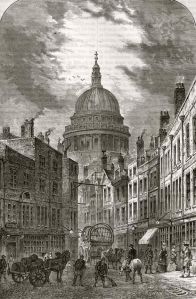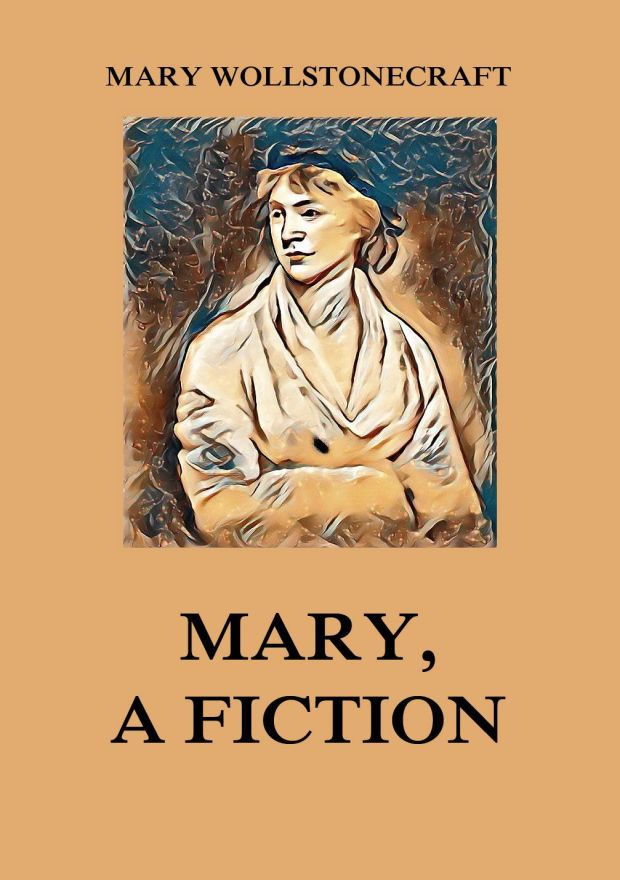A Woman of Her Own Making
 As March is Women’s History Month, I have chosen to continue my series on lesser known heroes with a woman far ahead of her time and a champion of women’s rights, Mary Wollstonecraft.
As March is Women’s History Month, I have chosen to continue my series on lesser known heroes with a woman far ahead of her time and a champion of women’s rights, Mary Wollstonecraft.
One might suppose it is a blessing so many women today seem to have no idea that their opportunities were once limited by their sex and that women were once treated as not fully human. It may seem overdramatic to say that women were once not considered fully human, but I would argue that was just the case. When we look at the history of women’s political and legal status, it becomes clear that women were once considered little better than chattel. To be thought of and treated in the same manner as livestock and household possessions is to be thought of and treated as not fully human. The fortunate woman may have been protected and well cared for, but she had few rights. Throughout much of history, women and everything that belonged to them were the legal property of the men in their lives to be used and disposed of as the men saw fit. Women belonged first to their fathers and then to their husbands. Any property or money that rightfully belonged to a woman passed into her husband’s control once they married. A woman did not even have the right to custody of the children she bore. Her children were their father’s property by law. Although women make up around half of any given population, it was not until the 20th century that we were allowed to vote. When taxes and tariffs were enacted, women endured the same financial burdens as men, but had no voice in selecting those who placed those burdens upon them.
 In what would become the United States, the Founding Fathers fought a war of independence from Britain because they deemed taxation without representation an unconscionable, unbearable burden, but when they sat down to write our Declaration of Independence and our Constitution, they neglected to extend the rights they claimed for themselves to their wives, mothers, sisters, daughters, and nieces. In a March 31, 1776 letter to her husband, future US president John Adams, Abigail Adams wrote the following plea that he and his colleagues…“remember the ladies and be more generous and favorable to them than your ancestors. Do not put such unlimited power into the hands of the husbands. Remember, all men would be tyrants if they could. If particular care and attention is not paid to the ladies, we are determined to foment a rebellion, and will not hold ourselves bound by any laws in which we have no voice or representation.” Unfortunately, little changed in the rights of women until the passage of the 19th Amendment to the US Constitution in 1920.
In what would become the United States, the Founding Fathers fought a war of independence from Britain because they deemed taxation without representation an unconscionable, unbearable burden, but when they sat down to write our Declaration of Independence and our Constitution, they neglected to extend the rights they claimed for themselves to their wives, mothers, sisters, daughters, and nieces. In a March 31, 1776 letter to her husband, future US president John Adams, Abigail Adams wrote the following plea that he and his colleagues…“remember the ladies and be more generous and favorable to them than your ancestors. Do not put such unlimited power into the hands of the husbands. Remember, all men would be tyrants if they could. If particular care and attention is not paid to the ladies, we are determined to foment a rebellion, and will not hold ourselves bound by any laws in which we have no voice or representation.” Unfortunately, little changed in the rights of women until the passage of the 19th Amendment to the US Constitution in 1920.
 When we consider of the history of women’s rights, we usually think of the suffrage movements of the late 19th and early 20th centuries, but ideas about equality with men did not suddenly appear full blown in the 1890’s. As with so many things, the desire to be treated fairly and equally started long before the reality. An early, vocal proponent was Mary Wollstonecraft (1759-1797), probably best known as the author of A Vindication of the Rights of Women (1792).
When we consider of the history of women’s rights, we usually think of the suffrage movements of the late 19th and early 20th centuries, but ideas about equality with men did not suddenly appear full blown in the 1890’s. As with so many things, the desire to be treated fairly and equally started long before the reality. An early, vocal proponent was Mary Wollstonecraft (1759-1797), probably best known as the author of A Vindication of the Rights of Women (1792).

Spitalfields, London, circa 1760
Born the second of seven children on April 27, 1759 in Spitalfields, London, Mary’s childhood should have been one of privilege since her father was left a substantial inheritance by his father. Unfortunately, Mary’s father was an inept manager who was forced to move his family several times over the course of her childhood with each new abode signally their financial and social decline. Given her literary output, one might think she was the beneficiary of an expensive education, but the only Wollstonecraft sibling allowed to attend school was her brother Edward, who became a lawyer. Despite the haphazard nature of her education, Mary managed to become well read in many areas, including the Bible, the ancient greats, Shakespeare, Milton, and the like. She was aided in her education through her early friendships with a retired clergyman and Thomas Taylor, translator of Plato. Forced by her family’s circumstances to earn a living, Mary by turns became a lady’s companion, a schoolteacher, and a governess.
In 1781, she attempted to establish a school in the Dissenter’s community of Newington Green with two of her sisters and illustrator and educator Fanny Blood, who had encouraged Mary’s pursuit of learning. Fanny would become Mary’s close, life-long friend. The school, while initially successful, ultimately failed, but the years had brought her into the sphere of the English Dissenters and radical thinkers. While she remained an Anglican all of her life, she formed close friendships with many of the Dissenters and progressive and original thinkers of the day.
One of her most important friendships was that with Joseph Johnson, radical publisher, bookseller, and entrepreneur. He counted such notables as William Blake and William Wordsworth among the authors he published. He was also a supporter of the Unitarians. Johnson saw talent in Mary and published her pamphlet, Thoughts on the Education of Daughters; with Reflections on Female Conduct, in the More Important Duties of Life, in 1786. He encouraged her writing, paid her bills when she couldn’t, and gave her employment as an editor and writer for his journal, The Analytical Review. She contributed to the Review until her death, writing as many as 200 articles on topics such as education, children’s books, reviews of fiction, sermons, travel, poetry criticism, natural history, and biographies. It is not an overstatement to say that Johnson saved Mary from a life of penury and ruin.
The development of her belief in equality for all coincided with historic events in both America and France and she read writers like Thomas Jefferson and Charles Talleyrand, whom she actually met when he came on a mission to London in 1792. Her interest in Revolutionary France piqued, she traveled to France in December 1792. While there, she met and fell in love with an American merchant and author, Gilbert Imlay. Because British subjects were in danger in France at that time, Mary traveled with Imlay

Mary’s daughter, Mary Wollstonecraft Godwin Shelley
pretending to be his wife. They never married, but it is said that he broke her heart due to his infidelity and rejection of her. In 1794, she bore him a daughter, Fanny, named for Mary’s dear friend Fanny Blood. Mary attempted suicide twice in 1795 and finally broke permanently with Imlay in March 1796. In April, she renewed her acquaintance with William Godwin and they became lovers. They married in March of 1997 and their daughter, Mary, was born in August of that year. Mary Wollstonecraft Godwin is remembered as the author of the gothic novel Frankenstein and wife of Romantic poet Percy Bysshe Shelley.
Today, Mary Wollstonecraft is best remembered for her championing of equal rights for all, her literary contributions, and her unorthodox life-style.
Full text of Vindication of the Rights of Women here.
Annotated Bibliography of Wollstonecraft’s Works
Major works by Mary Wollstonecraft:
- A Wollstonecraft Anthology
- Mary, a Fiction
- The Rights Of Woman
- Original Stories From Real Life, With Conversations Calculated To Regulate the Affections and Form the Mind To Truth and Goodness
- Political Writings
- Posthumous Works Of the Author Of a Vindication Of the Rights Of Woman V3-4
- An Historical and Moral View Of the Origin and Progress Of the French Revolution
- Original Stories With Five Illus By William Blake, With an Introd By Ev Lucas
- Thoughts On the Education Of Daughters, With Reflections On Female Conduct In the More Important Duties Of Life
- Letters Written During a Residence In Sweden, Norway, and Denmark
- Posthumous Works Of the Author Of a Vindication Of the Rights Of Woman
- A Vindication Of the Rights Of Women & a Vindication Of the Rights Of Men
- Original Stories – With Five Illustrations – By William Blake – With an Introd By Ev Lucas
- Vindication Of the Rights
- Vindication Of the Rights Of Women With Strictures On Political and Other Subjects
Fiction by Mary Wollstonecraft:

Resources:
https://fee.org/articles/mary-wollstonecraft-equal-rights-for-women/
http://www.bbc.co.uk/history/british/empire_seapower/wollstonecraft_01.shtml
https://plato.stanford.edu/entries/wollstonecraft/
https://www.tutor2u.net/politics/reference/mary-wollstonecraft-1759-97
Nice post, Linda. I love hearing about women who lived ahead of their time.
LikeLiked by 1 person
Thank you for this wonderful article! I have tried to share such facts but have been disappointed how this important look into female history mostly falls on deaf ears. Including my own offspring!
LikeLiked by 1 person
Thank you, Rebecca! It always amazes me when women have no idea how we were once treated.
LikeLiked by 1 person
And it’s especially sad that women are still treated as chattel in some parts of the world. Thanks for this excellent post.
LikeLiked by 1 person
Thank you for stopping by and commenting, Eilene. Agreed regarding some parts of the world.
LikeLiked by 1 person
And we could be again, especially if we put on blinders to the past.
LikeLiked by 1 person
I very much enjoyed this blog, Linda. I’ve read Mary Wollstonecraft’s biography, but I’d forgotten about her mother’s contributions and life. Thank you for sharing this.
LikeLiked by 1 person
Thank you for stopping by and commenting!
LikeLike